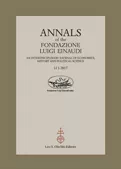The aim of this article is to analyze the history of Italian antifascist exile to France and United States and it is focused on the different features of these cases. In the first one the exiles were usually well accepted inside the Italian immigrant community mostly composed by people moved from Italy in search of economic security. These communities have often offered a support to the antifascist activities and has given to the exile the opportunity to enter in different social and cultural network and to reduce the condition of displacement that is a peculiar effect produce by exile experience. The situation in the United States was different: here Italian communities, quite totally oriented in favor of fascism, were not available to accept political refugees. Language also was a strong obstacle for the integration in the hosted society. Comparing these two different situations we can, however, underline that American academic and cultural institutions were usually well oriented toward exiles and offered them more opportunities. From this point of view, the double exile experience of Nicola Chiaromonte, who spent some years in Paris (1934-1941) and in the United States (1941-1948), is paradigmatic. After a difficult period of adaptation, he became an estimated voice in the world of the American radical left.



